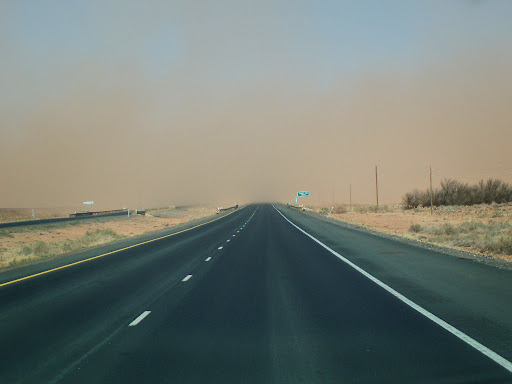How ADOT deals with dust
How ADOT deals with dust

Dust storm ahead!
Since yesterday we’ve received a number of really inspired Haboob Haikus. We are overwhelmed by the creativity that’s out there!
Have you had the chance to submit a poem yet?
Wait … before you hurry off to put the finishing touches on your masterpiece, we’d like to first share a little more about how ADOT deals with dust.
Like we said earlier this week, dust storms are ultimately an act of nature – they’re difficult to predict and control. But that doesn’t mean we can’t try to minimize at least the preventable dust.
We shared some tips for driving in dust on Monday (the most important one being, avoid driving through a dust storm) but it seems we talk about dust a lot around here. So for today’s blog post we wanted to recap some of the things we’ve discussed before about how ADOT works to mitigate against blowing dust year round.
First off, Arizona is in the desert (a fairly obvious point, we know), so dust and sand is an issue we always consider, especially during construction of a project.
The amount of dust on a construction site is constantly and closely monitored. Dust levels must meet ADOT and Arizona Department of Environmental Quality (ADEQ) policy and standards. Contractors can even be fined if there’s too much dust on projects.
Before construction even begins, water is applied to the site to not only help with compaction, but also to keep dust at bay. During construction, ADOT will often “seed” temporarily exposed dirt to encourage vegetation growth and prevent blowing dust.
Once construction is completed, ADOT will plant new vegetation in the areas that were disturbed, which, you guessed it cuts down on dust. In addition to plants, ADOT uses landform graphics to not only make a nice-looking landscape, but also to mitigate dust.
Finally, paving roads in and of itself is also a dust control effort … imagine how much dust our cars would kick up if roads weren’t paved.
The ability to reduce natural dust impact is, of course, beyond the control of ADOT. Private landowners play a role in dust control and so do the region’s policy makers. ADOT has and will continue to work with these stakeholders on the issue of reduced visibility created by dust storms.

